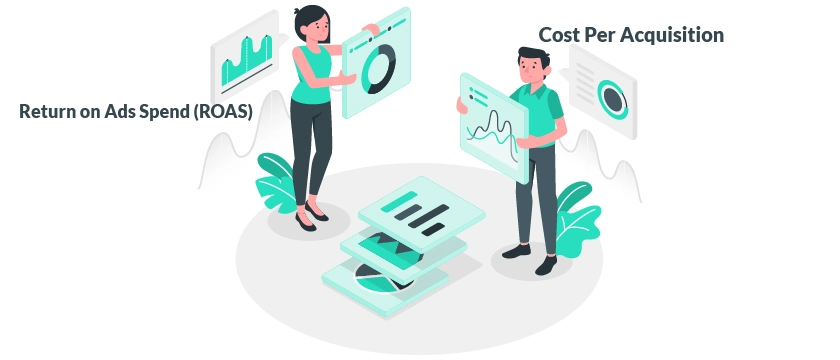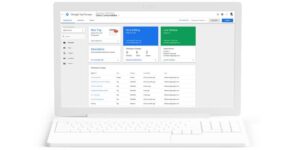Introduction
In the dynamic realm of digital advertising, measuring the success of your campaigns goes beyond mere impressions and clicks. Two key metrics that hold immense importance in determining the efficiency and profitability of your Facebook ad efforts are Cost Per Acquisition (CPA) and Return on Ad Spend (ROAS). In this blog, we will delve into the significance of these metrics within the context of a comprehensive audit, exploring insights that can help you refine your advertising strategy and enhance overall performance.
Understanding CPA and ROAS
- 1. Cost Per Acquisition (CPA): CPA is the metric that calculates the cost incurred for acquiring a new customer or lead. It’s a crucial metric for advertisers as it directly reflects the efficiency of your campaign in converting ad spending into tangible results.
- Return on Ad Spend (ROAS): ROAS is the ratio of revenue generated to the amount spent on advertising. It quantifies how effectively your ad spend is contributing to revenue. A ROAS of 200%, for instance, indicates that you’re generating $2 in revenue for every $1 spent on advertising.
Why CPA and ROAS Matter
- Budget Optimization
- Understanding your CPA helps you allocate your budget effectively, focusing on campaigns or channels that deliver the most cost-efficient results.
- ROAS guides you in maximizing revenue while maintaining a positive return on investment.
- Performance Benchmarking
- CPA and ROAS serve as benchmarks to assess the performance of different campaigns, ad sets, or channels, enabling data-driven decision-making.
- Profitability Analysis
- Evaluating ROAS in conjunction with CPA allows you to analyze the overall profitability of your advertising efforts, providing insights into areas for improvement.
- Effective Resource Allocation
- By identifying high-CPA and low-ROAS segments, you can reallocate resources to optimize your campaigns for better results.
Insights from Your Audit
- Segmented Performance Analysis
- Break down CPA and ROAS by different segments, such as demographics, locations, or devices. Identify high-performing segments to refine your targeting strategy.
- Ad Creative Impact
- Assess the correlation between different ad creatives and their impact on CPA and ROAS. Identify which visuals and messaging resonate most effectively with your audience.
- Time-of-Day Analysis
- Analyze performance during different times of the day or days of the week. Optimize your ad scheduling to capitalize on peak engagement periods, potentially lowering CPA.
- Keyword and Audience Relevance
- Evaluate the relevance of keywords and audience targeting to your CPA. Ensure that your ads are reaching users genuinely interested in your offerings.
- Landing Page Experience
- Examine the user experience on your landing pages. A seamless and relevant landing page can positively impact conversion rates, subsequently influencing CPA and ROAS.
- Seasonal Trends
- Consider seasonal fluctuations that may affect your CPA and ROAS. Adjust your strategy to align with peak seasons or capitalize on specific trends.
Strategies for Improvement
- Refine Targeting Parameters
- Use insights from your audit to refine your audience targeting. Eliminate low-performing segments and focus on those that drive efficient conversions.
- Optimize Ad Creatives
- Experiment with different ad creatives to identify those that resonate best with your audience. A/B testing can help refine your approach over time.
- Adjust Bidding Strategies
- Optimize your bidding strategy based on the performance of different campaigns. Manual bidding adjustments can help control costs and enhance ROAS.
- Enhance Landing Page Experience
- Continuously optimize your landing pages for relevance, user experience, and faster load times. A positive landing page experience can contribute to lower CPAs.
- Iterative Testing
- Use a systematic and iterative testing approach to refine your campaigns. Regularly analyze performance data and implement adjustments based on the insights gained.
Conclusion
A meticulous audit of your Facebook Ads performance, with a focus on CPA and ROAS, provides invaluable insights into the effectiveness of your advertising strategy. By leveraging these insights, advertisers can refine their approach, allocate resources efficiently, and drive better results. Continuous monitoring, testing, and optimization based on CPA and ROAS metrics create a pathway to a more cost-effective and profitable Facebook advertising strategy. Remember, the journey to success in digital advertising involves not just launching campaigns but consistently refining and optimizing them based on real-time data and insights.
To learn more or to acquire our services, please contact us at info@paypercampaign.com





